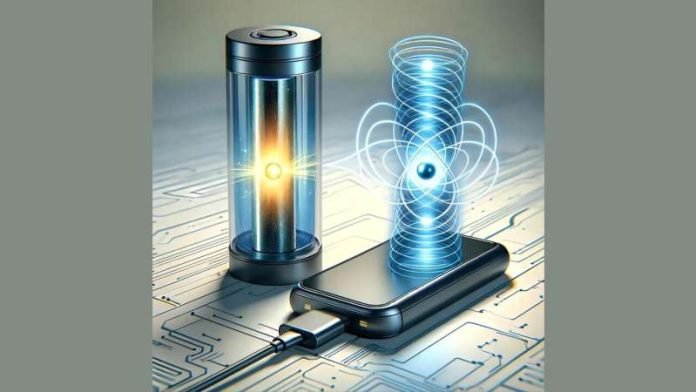
Imagine a future where charging your devices could be done quickly, efficiently, and without the hassle of cables or the worry of them wearing out too fast.
This isn’t a scene from a sci-fi movie but a real possibility thanks to a team of researchers from Boston University and Lanzhou University in China. They’re working on a special kind of battery, called a quantum battery, that uses the principles of quantum mechanics to work its magic.
Now, quantum mechanics might sound complicated, but at its heart, it’s just the science that explains how things work on a really, really small scale, like atoms and photons (which are tiny particles of light).
What makes quantum batteries so exciting is that they can use these tiny particles and the weird but wonderful rules of quantum mechanics to store and release energy in ways that could outperform the batteries we use today.
The researchers have come up with a new way to charge these quantum batteries using something called a rectangular hollow metal waveguide. Think of this waveguide like a super-efficient tunnel that guides the energy straight into the battery without losing any of it along the way.
This is a big deal because one of the big problems with making quantum batteries work in the real world is that they tend to lose energy through a process called decoherence, which is a fancy way of saying the energy gets scrambled and lost.
Decoherence is like trying to listen to your favorite radio station but hearing static instead of music. The static happens because the signal gets mixed up with all sorts of other signals and noises from the environment.
In the world of quantum batteries, this “static” can cause the battery to lose energy. But by using the waveguide, the researchers have found a way to keep the energy signal clear and strong, even over distances, which means the battery can be charged efficiently and quickly.
The team’s research shows that using the waveguide, they can move energy from the charger to the battery without the two needing to be physically connected. This is a bit like how Wi-Fi lets you browse the internet without plugging your computer into the modem. Except, instead of information, we’re transferring energy.
What’s really cool is that the researchers found that the way they’re doing this can actually prevent the battery from aging too quickly. Normally, you’d expect that using energy in this way might wear the battery out faster, but their method actually keeps the battery fresh for longer.
This breakthrough could mean a lot for the future of electronics. Imagine devices that charge faster, last longer, and are even better for the environment. That’s because these quantum batteries don’t rely on the chemical reactions traditional batteries do, which can be harmful to the environment.
The researchers are now looking to take their work to the next level by creating a system that can charge lots of batteries at once, from a distance, using the power of quantum mechanics.
This could mean we’d be able to charge all our devices without needing a bunch of different chargers and cables, making life simpler and greener.
In short, this research could be the first step towards a future where our devices are powered by the principles of quantum mechanics, making them more efficient, durable, and environmentally friendly.
It’s a glimpse into a future where technology works in harmony with the fundamental laws of the universe to make our lives easier and our planet healthier.
The research findings can be found in Physical Review Letters.
Copyright © 2024 Knowridge Science Report. All rights reserved.



